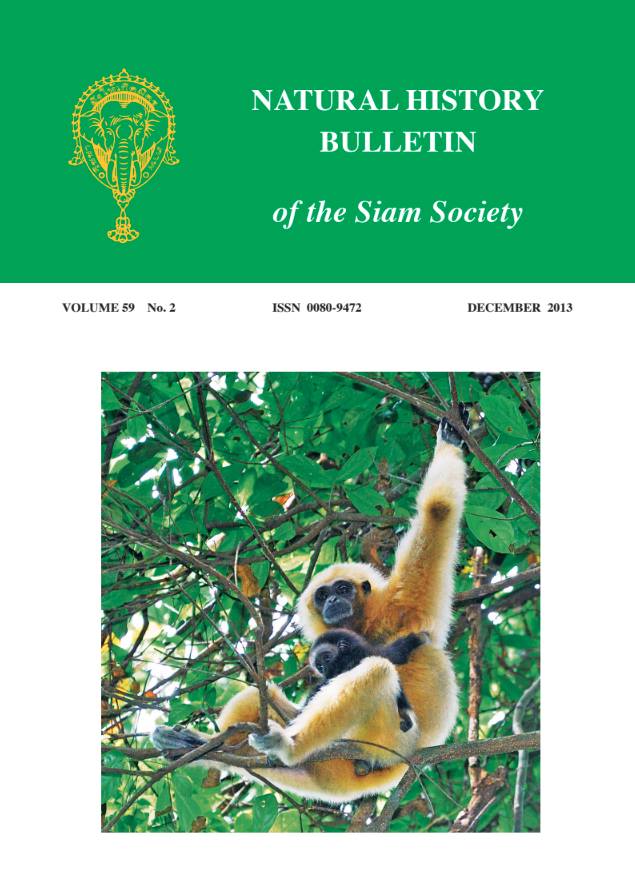Morphological Development of Hatchery-reared Larval and Juvenile Pangasius bocourti
Main Article Content
Abstract
We describe the morphological development of hatchery-reared larvae and juveniles of Pangasius bocourti using 111 specimens of 5.35 to 38.1 mm in body length (BL) sampled from day 1 to day 35. BLs of larvae and juveniles on day 1 were 5.99 ± 0.47 mm (mean ± SD), reaching 13.3 ± 0.76 mm BL on day14, 30.0 ± 2.37 mm BL on day 28 and 33.5 ± 3.00 mm BL on day 35. The notochord tip was slightly bent upward in the smallest larva of 5.35 mm BL, and a completely flexed notochord tip was evident in specimens of about 11 mm BL. Melanophores started appearing in larvae on such body parts as the yolk sac surface, eyes, dorsal surface of gut, head region, anterior part of lateral line, snout, dorsal contour of body, upper and lower jaws, and maxillary barbel, although those on the last four body parts were subjected to individual variation. Fin rays first appeared in the anal fin, followed by the caudal, dorsal and pectoral/pelvic fins, and fin-ray numbers were completed in the order of caudal, dorsal, anal, pelvic and then pectoral fins. The juvenile stage started consequently at 12.2 mm BL; however, at which point many the body proportions were in the process of developmental change, and most of them reached constant values relative to BL at about 30 mm BL.


